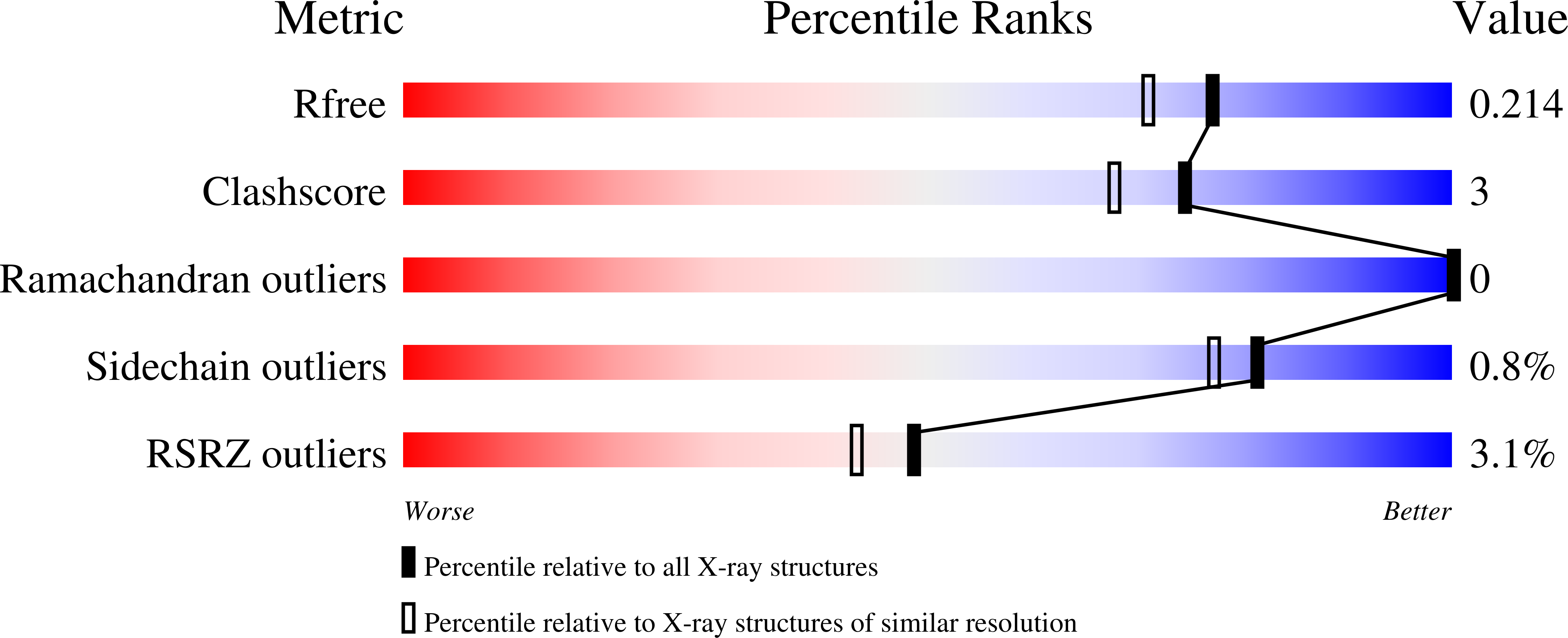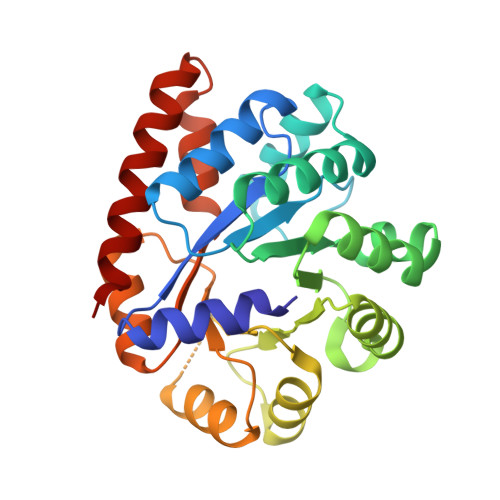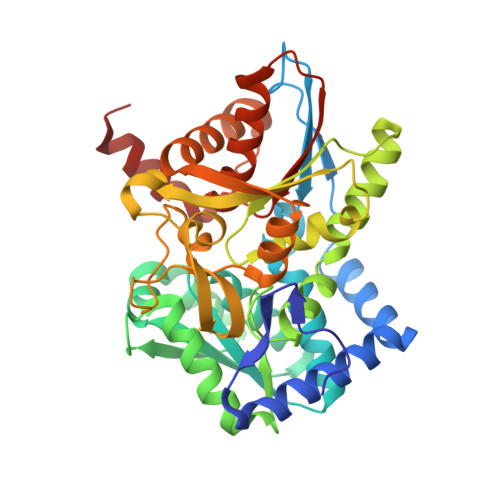Visualizing the tunnel in tryptophan synthase with crystallography: Insights into a selective filter for accommodating indole and rejecting water.
Hilario, E., Caulkins, B.G., Huang, Y.M., You, W., Chang, C.E., Mueller, L.J., Dunn, M.F., Fan, L.(2016) Biochim Biophys Acta 1864: 268-279
- PubMed: 26708480
- DOI: https://doi.org/10.1016/j.bbapap.2015.12.006
- Primary Citation of Related Structures:
4WX2, 4Y6G, 4ZQC, 5BW6 - PubMed Abstract:
Four new X-ray structures of tryptophan synthase (TS) crystallized with varying numbers of the amphipathic N-(4'-trifluoromethoxybenzoyl)-2-aminoethyl phosphate (F6) molecule are presented. These structures show one of the F6 ligands threaded into the tunnel from the ¦Â-site and reveal a distinct hydrophobic region. Over this expanse, the interactions between F6 and the tunnel are primarily nonpolar, while the F6 phosphoryl group fits into a polar pocket of the ¦Â-subunit active site. Further examination of TS structures reveals that one portion of the tunnel (T1) binds clusters of water molecules, whereas waters are not observed in the nonpolar F6 binding region of the tunnel (T2). MD simulation of another TS structure with an unobstructed tunnel also indicates the T2 region of the tunnel excludes water, consistent with a dewetted state that presents a significant barrier to the transfer of water into the closed ¦Â-site. We conclude that hydrophobic molecules can freely diffuse between the ¦Á- and ¦Â-sites via the tunnel, while water does not. We propose that exclusion of water serves to inhibit reaction of water with the ¦Á-aminoacrylate intermediate to form ammonium ion and pyruvate, a deleterious side reaction in the ¦Á¦Â-catalytic cycle. Finally, while most TS structures show ¦ÂPhe280 partially blocking the tunnel between the ¦Á- and ¦Â-sites, new structures show an open tunnel, suggesting the flexibility of the ¦ÂPhe280 side chain. Flexible docking studies and MD simulations confirm that the dynamic behavior of ¦ÂPhe280 allows unhindered transfer of indole through the tunnel, therefore excluding a gating role for this residue.
Organizational Affiliation:
Department of Biochemistry, University of California at Riverside, Riverside, CA 92521, USA.




















